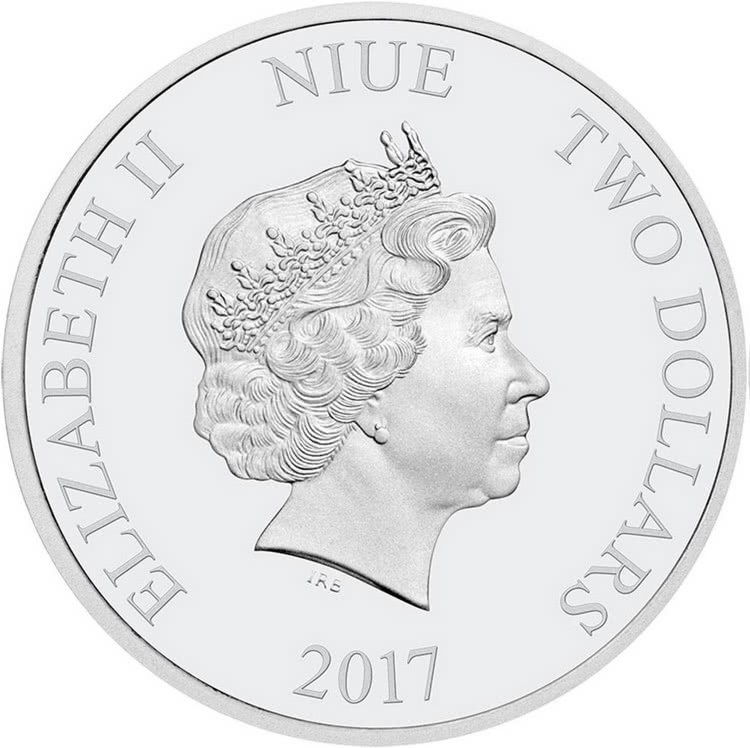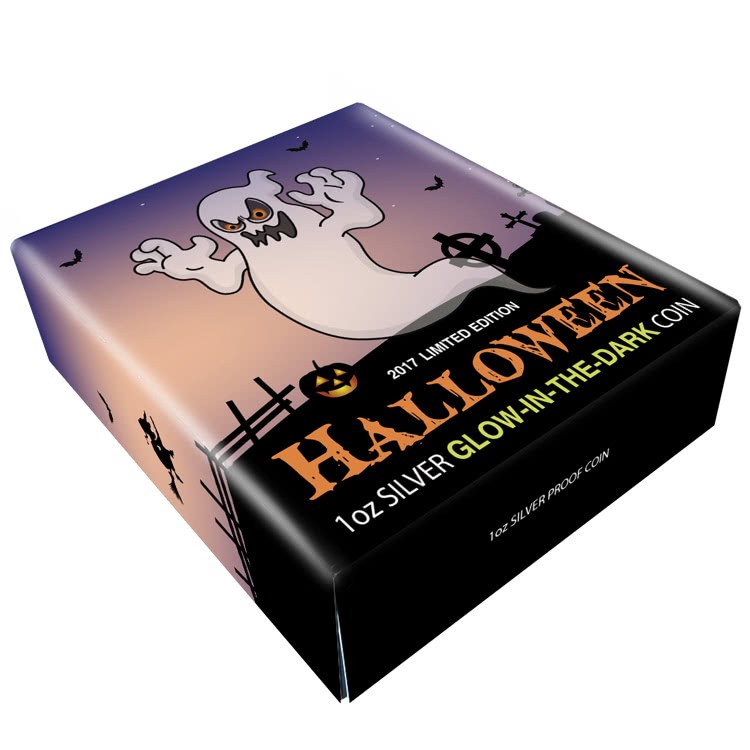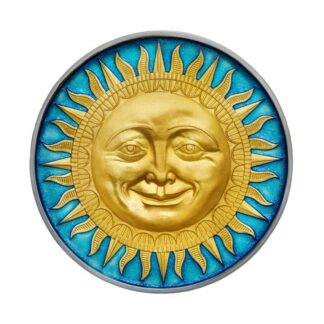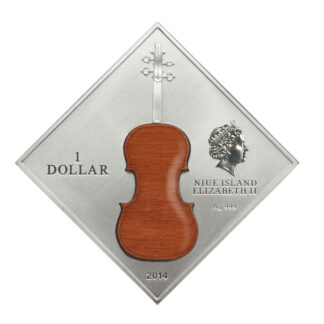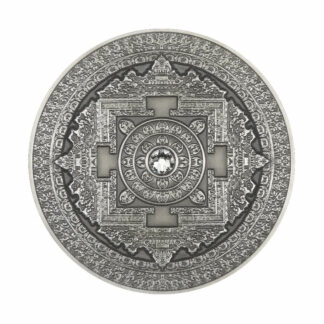Description
DESCRIPTION
On coin reverse there is a coloured image of the classical “GHOST” , elements of Halloween tradition and the inscriptions: ‘Happy halloween’.
The coin obverse shows the nominal value, an image of the Queen Elizabeth II with inscription, ‘Elizabeth II’, the name of the issuer, Art Mint mark, ‘Niue Island’ and the year of issue 2017.
THE GHOST
In folklore, a ghost (sometimes known as an apparition, haunt, phantom, poltergeist, shade, specter or spectre, spirit, spook, and wraith) is the soul or spirit of a dead person or animal that can appear to the living. Descriptions of ghosts vary widely from an invisible presence to translucent or barely visible wispy shapes, to realistic, lifelike visions. The deliberate attempt to contact the spirit of a deceased person is known as necromancy, or in spiritism as a séance.
The belief in the existence of an afterlife, as well as manifestations of the spirits of the dead is widespread, dating back to animism or ancestor worship in pre-literate cultures. Certain religious practices—funeral rites, exorcisms, and some practices of spiritualism and ritual magic—are specifically designed to rest the spirits of the dead. Ghosts are generally described as solitary, human-like essences, though stories of ghostly armies and the ghosts of animals rather than humans have also been recounted. They are believed to haunt particular locations, objects, or people they were associated with in life.
The idea of ghosts can be considered a tradition for certain cultures. Many believe in the spirit world and often try to stay in contact with their loved ones.
According to the Gallup Poll News Service, belief in haunted houses, ghosts, communication with the dead, and witches had an especially steep increase over the 1990s. A 2005 Gallup poll found that about 32 percent of Americans believe in ghosts!
What is Halloween?
The word Halloween is a contraction of All Hallows’ Eve (Evening). Halloween’s Day is always on the 31st of October, and it is a day where ‘the veil’ between worlds (as in the world of the living versus the world of the dead) is supposed to be thinner than usual.
You’re supposed to be more apt to see ghosts (and the souls of the dearly departed) on this day, and some good folks actually spending the day – and most particularly the night – at haunted locations in an attempt to do so. Others want to avoid seeing ghosts, and that is actually part of the reason why people dress up in intimidating costumes – to ward off ghosts, demons and evil spirits.
In Spain, Latin America, and Mexico they celebrate Hallowmass, and the third day of that is the most important one – it’s called All Soul’s Day – a.k.a. Halloween, the 31st October.
But the traditions of dressing up in frightening or funny costumes, apple bobbing, having parades, dancing, having masquerades and rave parties, carving pumpkins into jack-o’-lanterns, lighting bonfires, playing pranks – as well as visiting haunted attractions, telling scary stories and watching funny or frightening films on this day existed (and exists!) in other cultures and countries around the world as well.
In some countries it is considered a harvest festival, and in Ireland, Cornwall, Brittany, Wales and the Scottish Highlands there’s a very old tradition called Samhain (“summer’s end”), which has been considered of great importance for ages. This, like Halloween, includes a thinning of the veil between worlds, which means that spirits and fairies and such can visit our world.
The kids on Halloween play games (like apple bobbing) and, more importantly, there’s “guising” or trick-or-treating where they dress up in costumes and go from door to door and collect sweets and candy. The “Trick or treat?” statement the kids make is actually a (mostly empty) threat to do pranks (play tricks) if they don’t get sweets (treats). This tradition goes all the way back to Shakespeare’s time, because it is mentioned in his play ‘The Two Gentlemen of Verona’ from 1593.


